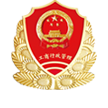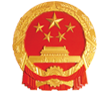 400 867 2009
400 867 2009斜體( italics) 是英語出版物中的一種傾斜字體,與羅馬體( roman) ,又稱正體相比較,前者使用范圍有限。“斜體字現今幾乎僅僅對羅馬字體發揮一種附屬性的特殊職能。”但這種職能在學術出版中不可用正體取代,否則易產生誤解。Richard Marius 和 Harvey S. Wiener曾給出了這樣一個句子并加以說明:Hawthorn's Scarlet Letter set him apart from the New England writers of his day. 那些不知道《紅字》是一本書名的讀者可能會認為霍桑是用紅筆寫作,或者霍桑有一位名叫 Scarlet 的通信者。若該英文句子中Scarlet Letter 用斜體標示則意為:霍桑的《紅字》一書使他有別于當時的新英格蘭作家。
那么究竟何時該使用英語斜體呢?筆者根據有關英語斜體的相關細則歸納如下:
一、用于作品名( the titles of works)
英語中,所有單獨出版的作品如: 書名、報刊名、戲劇名、電影名、計算機軟件名及錄音名稱都用斜體表示。這包括歌劇名、CD名,藝術作品,單獨出版的小冊子、長詩名、連環漫畫名稱、電視和收音機節目名稱、網址等。
( 一) 標示書名、刊物名、報紙名等
1. In his introduction to The Great Gatsby, Professor William Smith points out that “Fitzgerald wrote about himself and produced a narcissistic masterpiece. ”
此句中 The Great Gatsby 用斜體,為書名。威廉·史密斯教授在介紹《了不起的蓋茨比》時指出: “菲茨杰拉德的這部自我陶醉的代表作描述的是他本人。”又如: Alice Walker's novel The Color Purple has been both praised and criticized since 1982. (自 1982 年以來,人們對艾麗絲·沃克的《紫色》這部小說一直褒貶不一。)
需注意的是:《圣經》(the Bible) 及其中的書名,如創世紀 (Genesis) 、詩篇 (Psalms) ,以及古蘭經 (the Koran) 等圣著,還有文件名、法規名等不用斜體。如: The Book of Eccelesiastes provides some of the most haunting phrases in the Bible. 《傳道書》包含了《圣經》中一些令人難忘的警句。The Book of Matthew, in the New Testament, contains some of the Bible's best known parables of Jesus.( 《新約·馬太福音》含有《圣經》中耶穌最著名的講道故事。) The Declaration of Independence marked a turning point in history.( 《獨立宣言》標志著歷史的轉折點。)
2. When Newsweek published “Why Johnny Can't Write,”many schools began to reexamine their curricula in English.
此句中 Newsweek 用斜體,為刊物名。當《新聞周刊》刊載了《為什么約翰尼不會寫作》一文時,很多學校開始重新審視他們的英語課程。又如: Good House-keeping is a popular magazine.( 《好管家》屬通俗類雜志。)
3. The New York Times is a serious daily newspaper read on a national scale, reporting on the arts, food, etc. as well as covering national and international news.
此句中 The New York Times 用斜體,為報紙名。《紐約時報》是全美范圍的一份內容嚴肅報紙,它不僅報道國內外新聞,而且還刊載有關藝術、食物等方面的信息。又如: The Daily Telegraph is read by the people who remember the country as it used to be. ( 懷念昔日大英帝國者讀《每日電訊報》。)
有關英語報刊名中原有定冠詞的“舍”“留”問題,美國心理協會格式( APA stlye) 認為若定冠詞 the 作為報刊名的一部分,應該保留,而美國當代語言協會格式( MLA style) 認為盡管定冠詞 the 是報刊名的一部分,也應該刪去,如《紐約時報》應為 the New York Times,而不是 The New York Times.
( 二) 標示電影、電視、音樂、戲劇、長詩、軟件等作品名稱
1. Ang Lee's Life of Pi wins four Oscars at 85thAcademy Awards.
該句中的 Life of Pi 用斜體在此表示電影名。李安執導的《少年派的奇幻漂流》這部影片在第 85 屆奧斯卡金像獎中獲得四個金像獎。又如: Roman Holiday is a romantic movie which shows not only a love story but also the mysterious city of Roman. ( 《羅馬假日》是一部浪漫愛情影片,它不僅講述了一個愛情故事,而且也展現了羅馬這座充滿神秘的城市。)
2. Viewers selected “The Trouble with Tribbles” as their favourite Star Trek show of all time.
該句中 Star Trek 用斜體在此表示電視連續劇名。觀眾始終把《毛球族的麻煩》選為《星際迷航》中最受人喜 歡 的 一 集。又 如: The television series Friends ended a ten-year run in 2004. ( 電視連續劇《老友記》連續走紅十年之后于 2004 年謝幕。)
3. Revolver is the seventh studio album by English rock band the Beatles.
該句中 Revolver 用斜體在此表示音樂作品名。《左輪手槍》是英國甲殼蟲搖滾樂隊的第七張錄音室專輯。又如:Tchaikovsky wrote three ballets: The Nutcracker, Swan Lake, and The Sleeping Beauty. ( 《胡桃夾子》、《天鵝湖》和《睡美人》是柴可夫斯基所創作的三部芭蕾舞劇。) 但有曲式、數和音調確定的器樂樂曲既不用斜體也不用引號標示,如 Beethoven's Symphoney no. 7 in A. op. 92 ( 貝多芬《A 大調第七號交響曲》作品第 92 號) .
4. Oedipus Rex by Sophocles in the fifth century B. C., is possibly the most famous play of the classical period.
該句中 Oedipus Rex 用斜體在此表示戲劇名。《俄狄浦斯王》是公元前五世紀索福克勒斯所作,乃屬古希臘羅馬時期最有名的戲劇。又如: Hawthorne's story “My Kinsman, Major Molineux” bears a striking resemblance to Shakespeare's play A Midsummer Night's Dream. ( 霍桑的短篇故事《我的親戚莫里諾少校》與莎士比亞的戲劇《仲夏夜之夢》極為相似。)
5. Leaves of Grass is probably Whitman 's most widely circulated collection of poetry.
該句中 Leaves of Grass 用斜體在此表示單獨成冊的詩集名。《草葉集》或許是惠特曼作品中流傳最廣的詩集。又如: The Waste Land is a long and difficult but ultimately rewarding poem. ( 盡管《荒原》一詩既長又難,但仍值得一讀。)
6. I have Windows 2007 on my office computer.
該句中 Windows 2007 用斜體在此表示軟件名。我辦公室的微機裝的是《Windows 2007》軟件。又如:We need to use Excel in our work,我們工作中需要用到《Excel》軟件。
需提及的是: 作品中的章節、短篇故事、詩歌等都不用斜體,只用引號標示,表示它們只是獨立出版作品中的一部分。報刊文章、歌曲、電視收音機節目中的一集或片段也只能用引號標示。如: “Down the River” is the most interesting chapter in Edward Abbey's Desert Solitaire. ( 《順流而下》是愛德華·艾比《沙漠獨居者》一書中最有趣的章節。) Fitzgerald'sstory “Winter Dreams” prefigures the famous The Great Gatsby. ( 菲茨杰拉德《冬天的夢》這一故事是其著名小說《了不起的蓋茨比》的原型。) In his poem“ To An Athlete Dying Young,” A. E. Housman described the difficulties of the aging sports hero. ( 在《獻給一位英年早逝的運動員》一詩中,阿爾弗雷德·愛德華·豪斯曼描述了老齡體育英雄的困境。) Many John Denver fans consider “Take Me Home, Country Roads” to be his greatest piece of music. ( 許多約翰·丹佛的歌迷都認為《鄉村路帶我回家》是他的最佳歌曲。) In my favorite episode of I Love Lucy, “Job Switching,” Lucy and Ethel work in a chocolate factory. ( 電視劇《我愛露西》中,我最喜歡《交換工作》那一集,該集講的是露西和埃塞爾在一家巧克力廠工作的故事。) 雖然英語文章名用引號標示,但“當自己的文章名置于封面或頁碼上方時,不需加引號。”
( 三) 標示雕塑、繪畫等作品名稱
1. Michelangelo's David is surely one of the world's greatest sculptures.
本句中斜體 David 標示雕像。米開朗基羅的《大衛》無疑是世界上最杰出的雕像之一。又如: Rodin's The Thinker is often used to represent philosophy. ( 羅丹的《思想者》雕塑常用于代表哲學。)
2. Picasso's Guernica captures the anguish and despair of violence.
本句中斜體 Guernica 標示油畫。畢加索所作的《格爾尼卡》油畫記錄了在暴行中的絕望和痛苦。又如: The Mona Lisa is so small that the crowds generally obscure it from view.( 《蒙娜麗莎》肖像畫很小,總被人群遮擋。) 再如: Krazy Kat is an American newspaper comic strip by cartoonist George Herriman.( 《瘋狂貓》是美國報紙連環漫畫,由漫畫家喬治·赫里曼所作。)
不難看出,在標示作品名時,英語斜體的使用范圍與 GB/T15834 - 2011《標點符號用法》中漢語書名號的基本用法不盡相同。
二、用于特定的運載工具名稱( the names of vehicles)
英語中的特定運載工具應用斜體標示,具體包括飛船、火箭、飛機、輪船等的具體名稱,但不包括該運載種類。
( 一) 標示飛船、火箭等類名稱
1. The success of the Soviet's Sputnik galvanized the U. S. space program.
此句中的 Sputnik 用斜體表示( 俄) 人造衛星。前蘇聯人造衛星“伴侶號”的成功發射激勵了美國的航空計劃。又如: Voyager 1 moved faster than Voyager 2 and eventually passed it. ( “旅行者 1 號”比“旅行者 2號”速度快,并最終超過了它。)
2. A design flaw led to the explosion of the space shuttle Challenger.
此句中的 Challenger 用斜體表示航天飛機名。設計上的瑕疵導致航天飛機“挑戰者號”的爆炸。又如:On July 20,1969, Apollo 11 landed on the moon. ( 1969年 7 月 20 日,“阿波羅 11 號”宇宙飛船登月。)
( 二) 標示輪船名稱
1. The first European settlers at Plymouth arrived on the Mayflower.
該句中 Mayflower 用斜體表示特定的船名。普利茅斯的首批歐洲移民乘上了“五月花號”船。又如:The White Star liner Titanic sank in the North Atlantic in1912. ( 白星航運的“泰坦尼克號”于 1912 年在北大西洋沉沒。)
2. The U. S. Nautilus, an atomic submarine, made the first voyage under the polar ice cap in 1958.
該句中 Nautilus 用斜體表示特定的核潛艇名。美國核潛艇“鸚鵡螺號”于 1958 年在極地冰蓋下首次航行。又如: Here on the British battleship Prince of Wales the Atlantic Charter was signed on August 14,1941 by American President Roosevelt and British Prime Minister Winston Churchill. ( 在英國“威爾士親王”戰列艦上,美國總統羅斯福和英國首相溫斯頓·丘吉爾于 1941年 8 月 14 日簽署了《大西洋憲章》。)
( 三) 標示飛機名稱
1. The plane in which Charles Lindbergh flew over the Atlantic Ocean was named The Spirit of St. Louis.
本句中 The Spirit of St. Louis 用斜體表示特定飛機。查理斯·林白駕駛飛過大西洋的飛機名為“圣路易斯精神號”.
2. The Enola Gay,which dropped the bomb on Hiroshima, was kept in a warehouse until recently.
本句中 The Enola Gay 用斜體表示特定飛機。對廣島投擲炸彈的“艾諾拉·蓋號”轟炸機之前一直置于一家倉庫。
但具有機型的飛機( 如 Boeing 747) 不用斜體標示。
三、用于外來詞語( non-English words)
斜體可用于表示未歸化的外來詞語( unnaturalized foreign words),即未被權威詞典收入的外來詞語,以及動植物種屬的拉丁語。
( 一) 標示未歸化的外來詞語
1. The German term Weltanschauung, meaning “world view,” expresses a philosophical view of the universe.
此句中 Weltanschauung 斜體標示外來語德語詞。Weltanschauung 這一德語詞意為“世界觀”,該詞表示世界的哲學觀點。又如: Many old castles in Spain have been turned into Pardors where visitors can spend the night. ( 西班牙很多古老城堡都已變成了游客晚上居住的酒店。) Pardors 斜體標示外來語西班牙語。再如:My Dutch friends say they like being in a grzellig environment, one that has a lot of human warmth. ( 我的荷蘭朋友說他們喜歡“舒服”的環境,即頗有人情溫暖的環境。) grzellig 斜體標示外來語荷蘭語。
一般而言,英語中應盡量避免使用外來語,只在沒有合適的英語詞語表達時,才用外來詞語,而且通常伴有英語解釋。
2. In the Paris airport, we recognized the familiar no smoking sign: Défense de fumer.
此句中 Défense de fumer 斜體標示外來語法語詞組: 禁止吸煙。在巴黎機場,我們認識法語禁止吸煙這一熟悉標示 Défense de fumer.又如: Donke schon means “thank you” in German. ( Danke schon 是德語“謝謝”的意思)
3. “C'est la vie,” Madeleine said when she noticed the new, lower price.
此句中 C'est la vie 斜體標示外來語法語句子。當瑪德琳注意到新的更低價格時,( 用法語) 說道“這就是生活。”英語中引號不標示外來詞語,引號中的外來語引語和外來語題名也不用斜體。但類似格言的句子可以用斜體標示。故句 3 引號中的法語句子用斜體。
值得一提的是,人名、機構名、地名等外來詞語不用斜體,已成為英語普通詞匯的外來詞語也無需斜體。如: The menu offered spaghetti, lasagne, and pasticcio di fagiolini. ( 菜單上有意大利面條、意大利千層面和混合曲堤四季豆。) 該句中外來詞法語“菜單”,意大利語“意大利面條”、“意大利千層面”已成為英語普通詞語故不斜體。
外來詞語是否斜體應以詞典為準。沒有被詞典收入的外來詞語均可用斜體標示。《韋氏新大學詞典》( Webster's New Collegiate Dictionary) 還專門列出應該用斜體的外來詞語( “Foreign Words and Phrases”) 如: pax vobiscum ( 拉丁語: “和平與你同在”,應用斜體) ,mano a mano( 意大利語: “手牽手”,應用斜體)。
無需斜體的常用外來詞語有: 拉丁語: a. m. ( 上午) ,e. g. ( 例如) ,et al. ( 等) ,ad hoc( 特別的) ,concerto( 協奏曲) ,data ( 數據) ,per diem ( 每日津貼) ,rigor mortis ( 尸僵) ,status quo( 現狀) ,versus( 與……相對) ,vice verse ( 反之亦然) ; 法語: bète noire ( 令人傷腦筋的人或物) ,bon voyage ( 一路平安) ,cafe aulait( 牛奶咖啡) ,cliché ( 陳詞濫調) ,du jour ( 今日的) ,franc ( 法郎) ,genre ( 種類) ,laissez-faire( 放任自由的) ,raison d‘être ( 存在的理由) ; 德語: festschrift( 紀念文集) ,lieder( 民謠) ,sauerkraut ( 酸菜) ; 意大利語: pasta ( 意大利面食) ,pizza( 比薩餅) ; 西班牙語:amigo ( 朋友) ,machete ( 彎刀) ,sombrero( 寬邊帽) ;日語: judo ( 柔道) ,karate ( 空手道) ; 希臘語: criteria( 標準) .
(二)標示動物、植物種屬的拉丁語
1. An early modern human ancestor, Homo Erctus, migrated out of Africa about a million years ago.
該句中 Homo erectus 斜體表示動物種屬,是拉丁語。早期現代人的祖先,直立猿人大約一百萬年前遷出非洲。又如: The genus Accipiter is a group of birds of prey in the family Accipitridae. ( 鷹類猛禽是鷹科動物中的一群食肉鳥。)
2. Three types of orchids are easy and reliable to grow: Cattleya, Paphiopedilum, and Phalaenopsis.
該句中 Cattleya, Paphiopedilum, Phalaenopsis 斜體均表示植物種屬,是拉丁語。卡特蘭屬、兜蘭屬和蝴蝶蘭屬這三種蘭花易于生長。又如: The Latin name for dandelion is Taraxacum officinale. ( 蒲公英的拉丁學名是西洋蒲公英)
四、用于強調或引起注意 ( emphasis and attention)
斜體用于強調,不僅可以標示單詞,也可以標示單獨存在的數字和字母。
(一)標示所強調的單詞
1. Many writers have trouble differentiating the usesof lie and lay.
此句中斜體 lie 和 lay,表示強調這兩個單詞。許多作家都難于分清 lie 和 lay 這兩個單詞的用法。又如: The word benign is sometimes misspelled. ( benign 一詞有時拼錯。)
2. The word the is not capitalized in a title, unless itis the first word of the title or follows a colon or semicolon.
此句中的第一個 the 用斜體表示強調該詞。the一詞在題名中不大寫,除非它位于第一個單詞或緊跟在冒號或分號之后。又如: He was guilty of a felony, not a misdmeanor. ( 他犯的不是輕罪而是重罪。)
(二)標示所強調的字母
1. The letter I should be capitalized when used alone.
該句中斜體 I,強調該字母。當字母 I 單獨使用時,應大寫。又如: The letter e is the most frequently used letter in the English language. ( 字母 e 在英語中是最常用的字母。)
2. In the local high school, teachers gives A 's and B 's only to outstanding students.
該句中斜體 A 和 B,表示強調該字母。當地中學教師只給成績優異的學生 A 和 B.又如: When you write, your a 's and o 's sometimes look the same. ( 你書寫時,你寫的字母 a 和字母 o 有時看起來是一樣的。)
(三)標示所強調的數字
1. Is that last number a 3 or an 8?
本句中斜體 3 和 8 表示強調這兩個數字。最后那個數字是 3 還是 8? 又如: The number 100 equals 10? or “ten to the second power”. ( 數字“100”等于“102”或“10 的二次方”.)
2. The witness said that the license plate has two 5s in it.
本句中 5 用斜體以強調該數字。目擊者說該牌照中有兩個 5.
需注意的是: 英語中表示強調的方式很多。斜體作為一種文體工具,要應用得當,不能使用過多。
說明一點,在英語手寫稿和打印稿中,斜體用下劃線(underlining) 表示。斜體字下線和印刷品中的斜體字功能相同。但在書籍或其他印刷物中,通常采用斜體形式。
總而言之,英語斜體的功能與作用在學術出版物中舉足輕重。它在標示作品名時,應區別正體或引號所標示的范圍; 在標示運載工具名稱時,要注意是否特定所指; 在標示非英語詞語時,不妨借助詞典確定歸化與否; 在標示強調單詞、字母和數字時,不可過度用之。
| 杭州翻譯公司,杭州翻譯公司哪個好,杭州翻譯公司收費標準 | ||||
| 浙公網安備 33010802003197號 浙ICP備15039916號 |
||||
 |
 |
 |
||